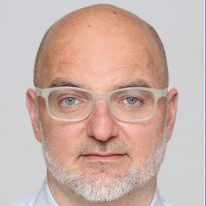Synthesis, Properties and Biological Targets of Bioactive Compounds
A special issue of Molecules (ISSN 1420-3049). This special issue belongs to the section "Natural Products Chemistry".
Deadline for manuscript submissions: closed (31 August 2023) | Viewed by 3203
Special Issue Editors
Interests: supramolecular chemistry; DNA, RNA, molecular recognition; spectroscopy; heterocyclic chemistry
Special Issues, Collections and Topics in MDPI journals
Interests: biomolecular interaction; DNA binding; DNA structure; protein structure; peptide; click-chemistry
Special Issues, Collections and Topics in MDPI journals
Interests: supramolecular chemistry; DNA, RNA, nucleotide recognition; spectroscopy; heterocyclic chemistry
Special Issues, Collections and Topics in MDPI journals
Special Issue Information
Dear Colleagues,
Numerous bioactive compounds have been found in nature and isolated from natural sources. Such molecules have demonstrated different, multiple and broad spectra of therapeutic or preventive biological activities: physiological and immunological effects, antiviral, antibacterial, antimycotic and/or antiparasitic activity, antioxidative, antiproliferative, and anti-inflammatory properties. These compounds show enormous structural diversity, and they influence different biological targets. For example, the biological activity of numerous small molecules often depends on their interactions with DNA, RNA or proteins that can influence gene expression or apoptosis of the cell. Further, the biological activity of compounds is also linked to their solubility, aggregation, metabolic pathways and transport through the cell membrane.
Chemistry is often inspired by nature, therefore many new bioactive compounds were developed by modifications and functionalization of natural products. Drug design, therefore, includes theoretical and experimental knowledge on synthetic techniques and also computer design of new bioactive compounds connected to the prediction of potential biological targets and investigation of the structure–activity relationship.
Dr. Marijana Radić Stojković
Dr. Ivo Crnolatac
Dr. Lidija-Marija Tumir
Guest Editors
Manuscript Submission Information
Manuscripts should be submitted online at www.mdpi.com by registering and logging in to this website. Once you are registered, click here to go to the submission form. Manuscripts can be submitted until the deadline. All submissions that pass pre-check are peer-reviewed. Accepted papers will be published continuously in the journal (as soon as accepted) and will be listed together on the special issue website. Research articles, review articles as well as short communications are invited. For planned papers, a title and short abstract (about 100 words) can be sent to the Editorial Office for announcement on this website.
Submitted manuscripts should not have been published previously, nor be under consideration for publication elsewhere (except conference proceedings papers). All manuscripts are thoroughly refereed through a single-blind peer-review process. A guide for authors and other relevant information for submission of manuscripts is available on the Instructions for Authors page. Molecules is an international peer-reviewed open access semimonthly journal published by MDPI.
Please visit the Instructions for Authors page before submitting a manuscript. The Article Processing Charge (APC) for publication in this open access journal is 2700 CHF (Swiss Francs). Submitted papers should be well formatted and use good English. Authors may use MDPI's English editing service prior to publication or during author revisions.
Keywords
- bioactive compounds
- natural products and modification of natural products
- organic synthesis
- in silico drug design
- physicochemical properties of bioactive compounds
- interactions of bioactive compounds with biomolecular targets (DNA, RNA, proteins)
- non-covalent supramolecular complex
- structure–activity relationships








